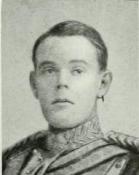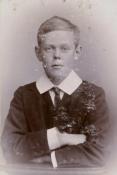
War Memorial
| 2nd Lieutenant Howard Avenal Bligh ST GEORGE | |
|
1st Life Guards, Household Cavalry Date of birth: 16th December 1894 Date of death: 15th November 1914 Killed in action aged 19 Buried at Zillebeke Churchyard Row A Grave 2 |

|
| Howard Avenal Bligh St George was born at the Shelburne Hotel in Dublin on the 16th of December 1894 the second son of Howard Bligh St George JP, a gentleman, and Florence Evelyn (nee Baker) St George of Coombe House, Kingston Hill in Surrey. He was educated at Hazelwood School until July 1908 where he was a member of the Cricket XI in 1906, 1907 and 1908 when he was Captain. He was a member of the Football XI in 1906 and 1907. They school magazine wrote the following on his 1906 cricket season: - "Still in the promising stage; hardly realises yet how hard - and well - he can play. Quite a useful bowler and good ground fieldsman." Of his 1907 cricket season they wrote: - "Never recovered from his unfortunate loss of net practice in May. We shall expect great things from him in 1908, with bat and ball. A very reliable fieldsman." Of his 1908 cricket season they wrote: - "(Captain) - A very capable performer all round; proved a good "skipper" in many respects, though with the bat and ball he failed to realise expectations. Given a little more self confidence, he might go far." They wrote the following on his 1906 football season: - "(Back) - Should develop into a sterling defender - must pay attention to three points - viz; resolute tacking, left foot kicking, and the judicious application of the cranium." Of his 1907 football season they wrote: - "(Right half) - Improved very much; vigorous and energetic; must learn to feed his front rank with more care." On leaving the school the magazine wrote of him: - "....goes to Eton; alike in work and play, his characteristic has been soundness rather than brilliance. His detractors must be few, if indeed they exist, and his loss to the school is well nigh irreparable." He went on to Eton College where he was in Mr C.H.K. Marten’s House, from September 1908 to July 1913. While he was there he was a member of the Eton Society and was Whip of the Beagles in 1912 and 1913. He was a member of the Officer Training Corps and was described by the Eton Chronicle as one "who had no taste for book learning". He was commissioned as a 2nd Lieutenant on probation in the 1st Life Guards on the 14th of January 1914 and served with the 7th Division at Antwerp landing there on the 8th of October 1914. He wrote a number of letters from the front and, in one, he described how his troop was ordered into trenches just before nightfall and by morning 45 of the 125 men had been killed and that he was the most senior officer remaining. In his last letter home he said he was the only unwounded officer in his squadron, of which only 33 men were left On the 15th of November 1914 the 1st Life Guards were acting as infantry and were in trenches at Zwarteleen near Zillebeke where they were subjected to shelling for an hour and a half in the morning but with no damage or casualties reported. At about 3pm Lieutenant St George went back to the farm where the battalion was headquartered to report that the enemy seemed to have evacuated their trenches in front of Zwarteleen Wood. This was thought to have been due to heavy shelling brought to bear on them by a British battery in the rear. While he was returning to the trench he was shot and killed by a sniper positioned in a house on the Zillebeke/Klein-Zillebeke Road One of his comrades, Lieutenant Lloyd wrote:- “The Regiment went into the line for the last time from Mud Farm on the 14th of November. There was severe shelling and about 3pm 2nd Lieutenant St George went back to headquarters to report. On his return he was shot dead by a sniper from a house on the Zillebeke Road. I was interested in Mr St George because I had an idea he came from a West of Ireland family. The vicar of my parish was a Mr St George, but I never found out whether there was any family connection. The strange thing about this young officer’s death was that it left his groom, Fred Whittle, in a queer predicament. Freddy had been bustled into khaki at the outbreak of war, duly enlisted, and without doing any drill or training of any kind had accompanied his master on active service. He has been completely at sea in the ranks, but, being a popular fellow, a post was found for him as groom and servant to a French interpreter who went by the name of Bon Sonty.The same sniper wounded George Haywood that same afternoon. I mention this because George was to prove a good comrade to me later in the war, when he returned after the Battle of the Somme. We vacated Mud Farm on the 17th of November…” Also hit later that day, by the same sniper, was Sergeant Roantree, who like Haywood, survived the encounter. Howard St George was buried on the battlefield during a period of heavy German shelling and was later re-interred. He is commemorated by a stain glass window at Zillebeke Church and on a memorial inside the church at the village of Newbold Pacey, where he is also commemorated on the village war memorial. He is commemorated on the memorial at Eton College. |
|
 | |
| Went on to Eton College |
Back